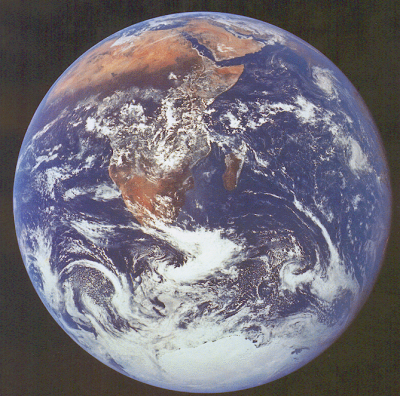Food and Agriculture Research: The Key to Feeding a Hungry and Growing World

But the future is much more challenging. As we look at projections over the next 30 years in food and agriculture, the picture is indeed daunting. With global population expected to exceed 9 billion people by 2050, food needs are expected to double during that time period. Additional non-erodible land is scarcely available for production unless we plant on otherwise fragile lands or rip up productive forest land for more planting. How we double food production without causing great damage to the environment and natural resources, recognizing the impact of climate change on agriculture production and doing it sustainably with an eye on better nutrition, is a huge challenge with implications for world affairs and geopolitics that could reshape the lifestyles and choices of billions of people. As consumers all over the world become more concerned about health and nutrition, food safety issues will greatly impact the industry, and consumers increasingly will demand to know the source and content of their food.
A major part of the answer is a substantially enhanced commitment of resources to food and agricultural research, especially in the United States, but also for Brazil, China, Canada, the United Nations and other international organizations currently working on strategies to feed a hungry world.
Since the first seeds were planted in the ground by our ancient ancestors thousands of years ago, humanity has overcome a myriad of challenges in the realm of food. The advancement in food production required by the development of human society has always been the result of expansion into new lands, development of new water and irrigation sources and innovation in agricultural science. Now, with only 12% of viable land yet to be put to use and climate change leading to a water-scarce future, the United States must rely on innovations in agricultural science to increase food production enough to feed 3 billion new people in the next 30 years.
We have done it before. The United States and its leaders in the 20th century inherited a farming tradition from earlier generations of Americans. Politicians and the food research community believed in the power of science and worked closely together. Government officials were unified in their dedication to investing in food and agriculture research, and that investment paid off, culminating in Professor Norman Borlaug’s “green revolution” in the 1960s.
Borlaug built his scientific innovations in crops on the discoveries of earlier generations of agricultural scientists. Significant investment by the U.S. government in agricultural research provided the building blocks that allowed Borlaug’s innovations to increase worldwide production of food, saving hundreds of millions of people from hunger and famine. Borlaug, working on plant research and plant breeding, is the only agriculture scientist to win the Nobel Prize for his work on feeding a hungry world.
A declining agricultural research budget
As our challenges continue to grow over the coming three decades, our current national commitment to food and agriculture research in the United States has waned. The great astrophysicist Carl Sagan once said, “Advances in agriculture and medicine have saved vastly more lives than have been lost in all the wars in history”. He rightly places medical and agricultural scientific research on the same pedestal of importance, but our government does not.
The U.S. Department of Agriculture’s agricultural research budget has declined 20% in the past 30 years, most. As our challenges continue to grow over the coming three decades, our current national commitment to food and agriculture research in the United States has waned precipitously since 2008. While the National Institute of Health and National Science Foundation received about $29 billion and $8 billion in research funding last year, respectively, the USDA’s research agencies received only $2.7 billion. Private industry has stepped up to fill funding gaps to a degree, but the industry’s focus is generally not on basic research and developing technologies to feed a hungry and growing world. Forty-six percent of privately funded agriculture research in developed countries is related to food processing, beverages and tobacco.
With proper funding and structure, food and agriculture research can ensure a reliable food supply despite the many challenges ahead. In the past, agriculture science focused on increasing yields, but new solutions need to be more diverse. At the top of the list should be discovering and implementing ways to use water more efficiently (and less of it) to irrigate crops. In particular, research into developing crops that can tolerate saltwater and alternative irrigation methods would make a huge impact on addressing hunger needs. Drought and heat tolerance are huge issues in both plant and animal research, especially given the uncertainties caused by climate change.
Another critical research need is developing pest- and disease-resistant crops. In a world of global trade and changing climates, the risk of disease and pests is exponentially higher, and animal disease, especially in the pork and poultry sectors, is becoming a bigger and bigger problem.
Agriculture research has to be about more than just the crops themselves. A stunning fact about global production is that 33% of all food grown is wasted, due to factors ranging from pricing issues, heavy subsidies and infrastructure weaknesses such as transportation problems or a lack of cold storage. Often for different reasons, the loss attributed to food waste is monumental in both the developing and developed worlds.
There is much to be done, but the first step is to rebuild support for, and understanding of, the role of agriculture research in the U.S. Congress and in the public. In the United States, historic support for food agriculture research came from an inherited tradition of farming. Now only 1.5% of Americans produce food, but 100% of Americans eat. Similar trends are occurring throughout the world. We cannot afford this continued disinvestment in food and agriculture research if we want to feed the world 30 years from today.









